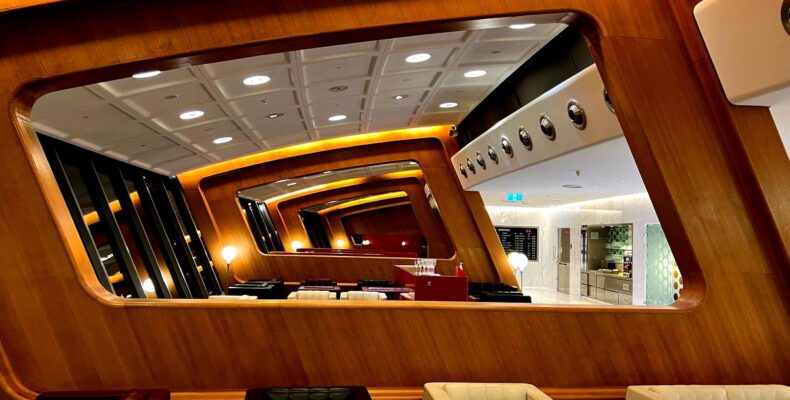Understanding Airport Lounge Access Costs
Ah, the airport lounge. A shimmering oasis of calm amid the chaos of flight schedules and security lines. If you’re a frequent traveler, you may have found yourself pondering the complex web of airline partnerships and just who forks over the cash for your lounge access. Picture this: You’re cruising in Lufthansa business class, riding high on your Star Alliance Gold status with United MileagePlus. But ask yourself, who’s really paying for your spot in that lounge? And what if you’re just in the back of the plane flying economy?
Recently, I stumbled upon an engaging piece that dissects this very issue. It made me realize that I’ve never ventured into this territory before, and trust me, it’s a topic worth diving into.
Which party is paying for your airport lounge access?
These days, there’s a multitude of ways to gain entry into those coveted airport lounges. Maybe you’re going in thanks to a swanky first or business class ticket, or perhaps your elite status opens the doors. Maybe you even have a Priority Pass tucked away in your wallet. But let’s untangle this web a little further.
The big three airline alliances—oneworld, SkyTeam, and Star Alliance—each have their own access regulations. Yet, when it comes to who picks up the tab for lounge access, it’s surprisingly consistent across the board:
- The airline you’re actually flying with (the operating carrier) covers the costs, provided your class of service includes lounge access.
- If you gain access through elite status rather than your ticket class, then the airline where you hold that status is on the financial hook.
- But, here’s the kicker: in some scenarios, the marketing carrier—the airline that sold you the ticket—might end up paying for that lounge access, especially if you’re on a codeshare flight.
Now let’s imagine a little scenario involving “lounge hopping” at London Heathrow Terminal 3, which is a paradise for oneworld members. Say you’re strutting around with oneworld Emerald status through American AAdvantage while flying British Airways in business class:
- British Airways covers any lounges you can enter thanks to your business class ticket, like the American Admirals Club and British Airways Galleries Club Lounge.
- Meanwhile, American Airlines picks up the tab for any lounges that you’d only get into based on your Emerald status, such as the American International First Lounge and British Airways Galleries First Lounge.
But if you happen to be lounging around in economy? Yep, you guessed it—American would be responsible for your lounge access fees in that situation.
For those equipped with Priority Pass, here’s how it works: Each visit to a lounge is billed to them. Priority Pass sells memberships either directly to consumers or to credit card companies at a predetermined cost, playing a risky game of “who’s likely to use the lounge.” Sure, they lose money on a few folks, but let’s be real—most members are likely pretty profitable. It’s a classic subscription service model.
How much is being paid for your airport lounge access?
Now, you’re probably wondering, just how much does it cost to step inside one of these lounges? Well, the answer is as negotiable as a Trader Joe’s bargain—there’s no magic number. However, if we drill down into some ballpark figures:
Typically, you can expect access to a business class lounge belonging to a major alliance to run around $50 per person. Meanwhile, it’s closer to $30 for the contract or Priority Pass lounges. And if you’re thinking about those posh first-class lounges? You might be looking at a reimbursement rate that sneaks just a tad higher.
So, if you decide to embark on a lounge-hopping escapade through a terminal, an airline could easily find itself racking up a bill in the hundreds for your jaunts. But remember, it’s mostly an accounting exercise—while there may be some discrepancies, the favor gets returned. Passengers wielding American Airlines tickets might pop into British Airways lounges across the pond, while British Airways travelers could find themselves in American lounges down in Miami.
Now, keep an eye out, as airlines might try to shuffle you off to a contract lounge instead of a partner airline lounge to pull the rug on costs. You’re usually still set to use the partner lounge, but this strategy helps keep it budget-friendly, considering contract lounges typically offer lower access fees compared to alliance lounges.
Bottom line
If you’re a frequent flyer, nothing quite beats the thrill of some lounge exploring. Lounge access tends to be first and foremost dictated by what class of service you’re indulging in, and then by your elite status, should it be relevant. Sure, these lounges can cost the airlines a pretty penny, but at the end of the day, not much cash is likely changing hands since these arrangements often balance out.
So, as you mentally gear up for your next flight—perhaps to that fantastic Val Seny ski resort—keep in mind the behind-the-scenes financial gymnastics that turn a simple lounge visit into an intriguing story in its own right.
